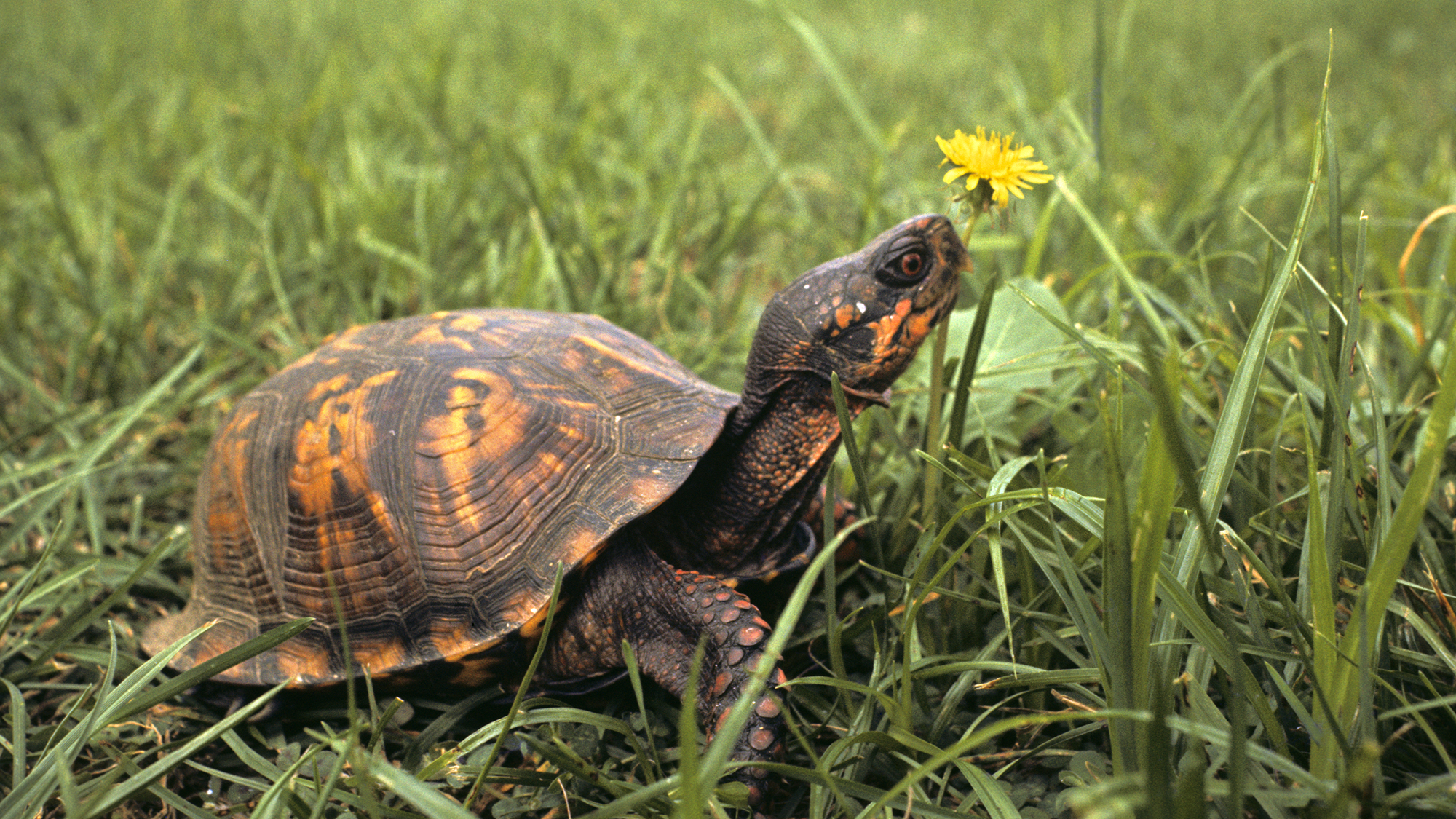

In animal evolution, a classical yet controversial idea posits that bigger is better. Bigger animals can reign supreme as hunters, fighters, and mates by simply out-bulking the competition. Living large enables easier survival, so the long-held theory goes. Called “Cope’s Rule,” after paleontologist Edward Drinker Cope, the concept first emerged among paleobiologists in the 19th century. Initially, Cope’s Rule seemed like a good explanation for the mega mammals like wooly mammoths and saber tooth tigers that once roamed North America. For dinosaurs, too, Cope’s Rule appears to fit. But exceptions to the trend soon became apparent.
Over millennia, some animal species and populations have grown smaller, not larger, according to the fossil record. Ice Age horses that occupied Alaska in the distant past, some anole lizards living on Caribbean islands, many types of turtles, and even dragonflies all shrunk through time, research suggests. These observations run counter to prevailing expectations of animal size, and have gone largely unexplained for decades. A newly proposed evolutionary hypothesis, tested via computer modeling, could help solve the mystery.
Intense levels of competition between species and a high risk of extinction leads animals to trend smaller, according to the theory outlined in a study published January 18 in the journal Communications Biology. The researchers built a complex computer model of community evolution with 20 different mathematical parameters including things like predation rate and baseline mortality. They tracked a modeled group of interacting organisms through a time progression across multiple scenarios and explored how body size, species abundance, and ecological niche shifted under different circumstances. Through their model, they explored various resource and risk dynamics and found size outcomes changed depending on the scenario.
In some set-ups, Cope’s Rule does indeed appear to hold true. When resource competition between species is low and the overall risk of extinction is minimal, the model suggests that animals do trend larger. Similarly, when top predators go extinct, animals lower down on the ecological ladder may evolve larger to take advantage of the open niche. Yet in more cutthroat scenarios–where competition for prey, habitat, or other basic needs is extreme across the web of life–animal populations may maintain their size or even shrink, says lead study author Shovonlal Roy, a professor and ecological modeler at the University of Reading in the United Kingdom.
“We really didn’t expect that,” Roy says. He and his colleagues did not set out to disprove Cope’s Rule, but to see if it would hold up to modeling. The more-than-a-century-old theory has been debated for decades. Some evolutionary biologists and paleontologists have dismissed it as an artifact of selection bias for big animals, while others have remained loyal to the theory, which seems to hold for so many species.
The study results suggest that reality is more complicated than a single notion of body size. Moreover, the model findings offer an evolutionary explanation for exceptions to the rule, says Roy: these are not accidents or aberrations, but outcomes resulting from clear, mathematically interpretable pressures.
For scenarios in which species shrink over time, the researchers propose a “recurrent inverser Cope’s rule.” By the guidance of this new theory, high competition forces animals to diversify their ecological niches, seeking out new foods or habitats. Yet, Roy explains, there will always be pressure to return to the original resource, for which an animal was initially well-suited. Accessing that sought-after resource is easier the smaller you are. Smaller animals take up less space and require less energy. Sure, there are advantages to being big, but sometimes small is superior.
Previously, science offered exceptions to the rule with no overarching explanation. Now, there’s a proposed “common framework” which biologists and others can work off of, says Roy. This complementary evolutionary theory could shed light on certain trends, even currently unresolved mysteries like the world’s shrinking bird problem. Birds in many habitats worldwide seem to be getting smaller, and the change correlates with rising temperatures. But physics doesn’t appear to explain the whole story. The recurrent inverse Cope’s Rule might offer insight.
[ Related: These extinct, nearly 10-foot-tall apes could not adapt to shifting seasons ]
In all of the models the researchers ran, animals that rapidly grew larger or shrunk were headed towards extinction. But that’s the way of the world, says Roy. For most species, especially at the extreme ends of the size spectrum, extinction is inevitable over the long arc of evolutionary time because extremes are vulnerable to change. A recent study suggests that the largest primate to ever live, an ape clocking in at almost 10 feet tall and weighing more than 550 pounds, likely went extinct because its massiveness made adapting to climate shifts more difficult. Again, Roy says this extinction aligns with their model.
Yet all of this is still theoretical. Though the researchers’ computer model is intricate and took years to fine tune, real-world tests and data are needed to back up the idea. Roy says he hopes to see future research take on the recurrent inverse Cope’s Rule and assess its validity in the fossil record. He’d also like to use paleontological data to build better and more comprehensive versions of the model that account for variables like temperature and habitat loss. For now, what’s proven is that animals aren’t the only things that evolve: our understanding of the world can too.
